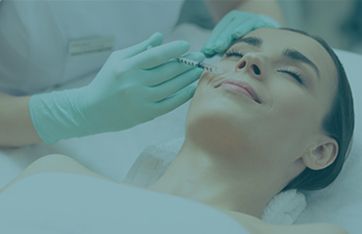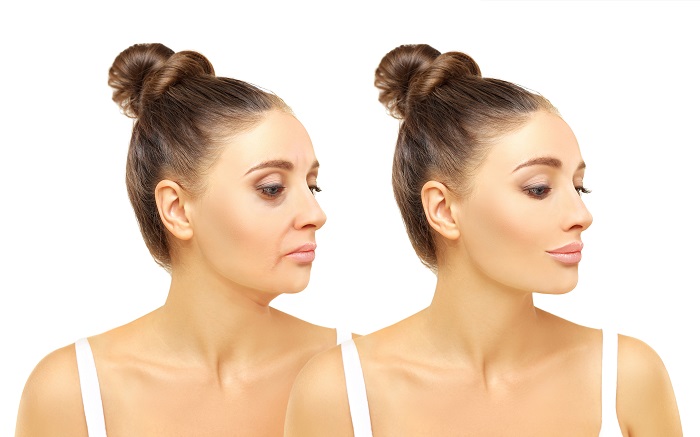What Dermaplaning aftercare tips do Boston’s top MedSpa doctors recommend?
Dermaplaning is a highly effective physical exfoliation method, which uses a surgical scalpel to shave away facial peach fuzz hairs and dead surface skin cells. This process stimulates your skin’s natural regeneration mechanisms, leaving a rejuvenated and healthy looking complexion.
Despite the Dermaplaning procedure being quick and painless, with no downtime, patients see amazing results after their treatment. This is why everyone is turning to dermaplaning as a regular skin restoration treatment. Dermaplaning can have particular benefits for those who suffer from acne scarring and hyperpigmentation.
Dermaplaning aftercare tips

Following your treatment, it is important to take good care of your skin so that you can maintain your excellent results. If you follow your doctor’s post-treatment advice carefully then you are likely to achieve better and longer lasting results.
Aftercare tips recommended by the experts include:
- Avoid the use of saunas or steam rooms and don’t engage in any strenuous exercise for 24 hours
- Avoid using any products on your face which contain exfoliating ingredients for 24 hours to avoid irritating your skin any further
- Do not wear any makeup for 24 hours
- Do not book in any other facial treatments until 2 weeks after your dermaplaning
- Follow a very simple skincare routine for 2 weeks post-treatment. Cleanse your skin gently using water only or a very mild cleanser
- It is important to moisturize your freshly exfoliated skin regularly to rehydrate it. Many patients find that products containing hyaluronic acid, vitamin C and retinol are particularly effective post dermaplaning treatment
- Do not rub your skin dry, instead pat it gently
- Avoid the use of any harsh cleaning products
- Avoid using a washcloth, instead just use your clean fingers to cleanse your face
- Steer clear of direct sun exposure for 2 weeks post-treatment and then use a high factor sunscreen (SPF 30+) to protect your delicate facial skin
Sensitive skin: Dermaplaning for rosacea
Rosacea, which leads to inflammation and redness of the face, can be a very embarrassing and bothersome condition. It can also be very persistent and difficult to treat. Dermaplaning can be particularly effective at reducing the symptoms of rosacea. As dermaplaning is less intense than other treatments, such as microdermabrasion, it is more suited to those with sensitive skin and conditions like rosacea.
It is worthwhile discussing your treatment choices carefully with your doctor before making any decisions. Your doctor will take into account your full medical history and the current condition of your skin, to decide whether or not you are a suitable candidate for dermaplaning.
Dermaplaning vs microdermabrasion
Dermaplaning and microdermabrasion may sound very similar but these treatments are actually quite different. They are both physical methods of exfoliation, but it is the way in which they exfoliate the skin that stands them apart. It is useful to understand the differences between these two treatments, to help you to decide which one is most suitable for you.
The main differences between dermaplaning and microdermabrasion are:
Dermaplaning
- A surgical scalpel is used to shave away peach fuzz hairs and dead surface skin cells, leaving a replenished complexion
- The treatment is painless and can even be performed on sensitive skin
- You will see visible results after one treatment
Microdermabrasion
- A different tool is used for microdermabrasion. Minor abrasions are formed by pulling the skin across fine diamond crystals using a vacuum
- Microdermabrasion removes dead surface skin cells but does not remove peach fuzz hairs
- Microdermabrasion is a more intense treatment and is therefore not suitable for patients with sensitive skin types and those with rosacea, acne or broken capillaries
- A few treatments will be required before you start to see any visible results
Does microdermabrasion remove facial hair too?

The short answer to this question is no, microdermabrasion has no effect on facial hair. If you are looking to eliminate the fine vellus hairs from your face, then your best choice is to opt for dermaplaning treatment instead.
Dermaplaning and chemical peels: Shave before face mask
Shaving your face using dermaplaning treatment clears away the surface layers of your skin. This enables better absorption of facials, skincare products and serums and chemical peels. Combining dermaplaning with a chemical peel straight after will enable your skin to more deeply absorb the chemicals placed on it. This will ensure that you get better results from your peel. It can also work out more cost effective combining the two treatments, as many MedSpas offer reduced prices when booking double treatments.
How often should you dermaplane?
Dermaplaning is not a permanent solution, so you must continue to have regular treatments to maintain your amazing results. A single dermaplaning session removes around two to three weeks’ worth of dead skin cells and peach fuzz hair.
Experts recommend having a dermaplaning treatment every three to four weeks. Your doctor will be able to sort out the best treatment plan to fit in with your needs and schedule.
Finding a dermaplaning face treatment near you
So where do you start when deciding on a provider for your dermaplaning treatment? Cost, quality of results and location may all be factors which influence your choice.
The cost of dermaplaning treatment does vary depending upon the expertise and reputation of your chosen doctor. Choosing a highly qualified board certified doctor, who can show you a portfolio of dramatic before and after pictures, ensures that you achieve the best quality results with minimal risk of side effects. It is really worth spending the extra money to ensure that you get the best possible care.
If you live in or around Natick, Massachusetts or the Boston Metro area, then contact Evolution MedSpa Boston today to see if dermaplaning is the right choice of treatment for you. You can give the friendly team a call or book your initial consultation online today.

Recent Comments